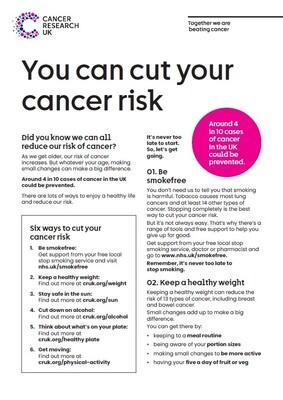SomaliaŌĆÖs Resilience: Navigating from Turmoil to Renewal in the Horn of Africa
Situated in the strategic crossroads of the Horn of Africa, SomaliaŌĆÖs history is a profound narrative of upheaval and endurance. Once renowned as a vibrant center for commerce and cultural exchange, decades of civil unrest and political fragmentation have severely weakened its societal structures and economy. However, amidst these enduring hardships, emerging initiatives signal a gradual transformation. Collaborative efforts by Somali communities alongside international partners are fostering peacebuilding and institutional reconstruction. This article examines SomaliaŌĆÖs complex trajectory from disintegration toward recovery, highlighting ongoing challenges while celebrating the unwavering determination of its people to rebuild their nation.
The Origins of SomaliaŌĆÖs Collapse: Historical Divides and Political Fragmentation
The collapse that engulfed Somalia stems from deep-rooted historical tensions intertwined with governance failures and external meddling. Central to this turmoil are entrenched clan divisionsŌĆöan intrinsic aspect of Somali societyŌĆöthat were intensified by colonial-era policies designed to divide local populations for easier control. The outbreak of civil war in 1991 triggered state disintegration, plunging the country into cycles of violence that devastated infrastructure and crippled economic activity, leaving millions impoverished.
Compounding these internal fractures were foreign interventions which often prioritized geopolitical interests over stability, inadvertently empowering extremist factions like Al-Shabaab who exploited power vacuums to expand their influence. These dynamics prolonged instability by undermining efforts at national reconciliation.
Signs of Progress: Milestones on SomaliaŌĆÖs Road to Recovery
Despite persistent obstacles, recent years have witnessed encouraging developments signaling progress toward rebuilding governance frameworks and revitalizing socio-economic conditions. International stakeholders increasingly emphasize supporting community-led peace initiatives alongside inclusive political processes as foundational pillars for sustainable recovery.
Investments targeting education systems, healthcare access improvements, and infrastructure rehabilitation are gradually stimulating economic revival while fostering social cohesion among diverse clans through dialogue-based reconciliation programs.
| Year | Significant Event | Resulting Impact |
|---|---|---|
| 2012 | Establishment of Federal Government Structure | Paved way for enhanced political integration across regions |
| 2017 | Lauch of National Development Strategy Plan | Drove focus on economic diversification & growth sectors |
| 2020 | Cancellation & Restructuring Of External Debt Obligations | Able fiscal resources freed up for public investment projects |
| 2023+ | Sustained Improvements in Security Environment < td > Boosted confidence among foreign investors & aid agencies |
Navigating Persistent Obstacles: Security Risks & Humanitarian Crises Impeding Reconstruction Efforts
The journey towards stabilization remains fraught with significant impediments that continue to stall comprehensive development plans across Somalia.The ongoing insurgency led by militant groups such as Al-Shabaab poses an ever-present security threat;a climate marked by frequent attacks disrupts everyday life while discouraging much-needed foreign direct investment crucial for job creation.< / p >
Politically,fragmentation persists within governing bodies;differing agendas between federal authorities versus regional administrations hinder unified policy implementation essential for nationwide progress.
Environmental calamities exacerbate humanitarian distress; recurrent droughts coupled with seasonal floods intensify food insecurity levels leading to widespread displacement.Limited access remains critical regarding clean water supplies along with basic health services;a vicious cycle perpetuating malnutrition especially among children under five years old impedes human capital development necessary for long-term prosperity.< / p >
| Indicator< / th > | Current Status (2023)< / th > | Primary Challenges< / th > < / tr > < / thead > |
|---|---|---|
A Holistic Approach: Strategic Recommendations For Global Partners Supporting Somali Stability And Growth
An effective international response must embrace a comprehensive strategy addressing both immediate humanitarian relief needs alongside structural reforms tackling root causes fueling conflict cycles within Somalia. Pivotal investments should target upgrading critical infrastructure networks including roads connecting rural areas with urban markets plus expanding reliable energy supply systems vital not only for commerce but also improving quality-of-life indicators nationwide.< strong />Capacity-building initiatives aimed at enhancing administrative competencies within local governments will empower grassroots leadership enabling more responsive service delivery whilst counteracting extremist recruitment drives fueled partly through disenfranchisement.< strong />Education-focused programs emphasizing vocational training aligned closely with labor market demands can equip youth populationsŌĆöwho constitute over half the populationŌĆöwith skills necessary for productive employment thereby reducing unemployment rates significantly over time.< strong />Regional cooperation frameworks involving neighboring countries combined with global knowledge exchanges can accelerate technology adoption particularly in agriculture modernization techniques boosting food security resilience against climate variability effects . Finally , transparent mechanisms ensuring equitable distribution aid resources will strengthen trust between donors recipients ultimately laying groundwork sustainable development foundations . /p> A Forward-Looking Perspective On Somalia’s Revival JourneyThe situation unfolding across Somalia encapsulates both daunting challenges yet remarkable potential inherent within its resilient populace striving towards renewal amid adversity . While shadows cast long from past collapses , collaborative endeavors spanning local actors supported robustly by international partnerships illuminate pathways toward lasting peace stability socioeconomic advancement . Continued prioritization investments focused on infrastructural enhancement educational empowerment coupled inclusive governance reforms remain indispensable pillars underpinning this transformative process . As global stakeholders maintain engagement momentum , prospects brighten not just nationally but regionally throughout Horn Africa where interconnected destinies call upon shared commitment forging prosperous futures together . /p> |







